
At 6:36 a.m. EST Friday, ULA’s human-rated Atlas V rocket set sail from Cape Canaveral with Boeing’s first CST-100 Starliner space capsule and kicked off its long-awaited maiden voyage to the International Space Station (ISS) on the un-crewed Orbital Flight Test. But while the launch itself went off flawlessly into the morning twilight, an automated timing issue on Boeing’s Starliner caused the spacecraft to achieve orbit but miss the ISS.
However all is not lost, not by a longshot. Automated docking at the ISS is not a mandatory requirement for NASA to certify either the Starliner or SpaceX Crew Dragon. Currently in a stable orbit, Boeing will still hit many of the test objectives for the mission, including one of the most critical: de-orbit, re-entry and landing, now scheduled for Sunday morning at White Sands, New Mexico.
As outlined in AmericaSpace’s preview article, the CST-100 Starliner has been around a decade in the making, recipient of several rounds of Commercial Crew Development (CCDev) funding from NASA to gradually mature its systems, before it won a $4.2 billion slice of the Commercial Crew transportation Capability (CCtCap) “pie” in September 2014. Under that contract, Boeing and fellow Commercial Crew finalist SpaceX were tasked with bringing their respective vehicles to full flight readiness. Flying atop a Falcon 9, SpaceX’s Crew Dragon completed its initial unpiloted shakedown mission in March 2019, with OFT being Boeing’s answer.
Both partners will then stage crewed missions in 2020, with Crew Dragon targeted to carry veteran NASA flyers Doug Hurley and Bob Behnken to the ISS no sooner than February and CST-100 Starliner due to loft NASA astronauts Mike Fincke and Nicole Mann, together with former shuttle commander and Boeing test pilot Chris Ferguson at some point in the first half of the year.
After these milestones are concluded, both partners will stage at least two and as many as six operational missions, ferrying crews to the ISS for up to seven months at a time.
The vehicle flying today is expected to be reused for the second crewed CST-100 Starliner mission in early 2021, known as Post-Certification Mission (PCM)-1, which will ferry NASA astronauts Sunita Williams and Josh Cassada to the space station for a six-month tour.

Weather conditions for Friday’s opening launch attempt stood at 80-percent-favorable, and while low scattered clouds and wind were of some concern, all was well to go for launch, so launch it did.
The rocket used to loft the CST-100 Starliner is a never-before-flown incarnation of the Atlas V. Its lowermost component—the 107-foot-long (32-meter)—Common Core Booster (CCB) is a familiar sight, physically identical to the 80 previous Atlas Vs which have achieved a 100-percent success rate since August 2002. But atop the CCB, the Centaur upper stage differs in that it carries not one, but two engines, to achieve a “flatter” trajectory during its single “burn” and afford a safer re-entry environment for astronauts in the dire eventuality that a launch becomes needed. And the N22 is the first time an Atlas V will have flown without a bullet-like payload fairing. To improve the aerodynamic flow around the vehicle during ascent, an “aeroskirt” has been included aft of the spacecraft.
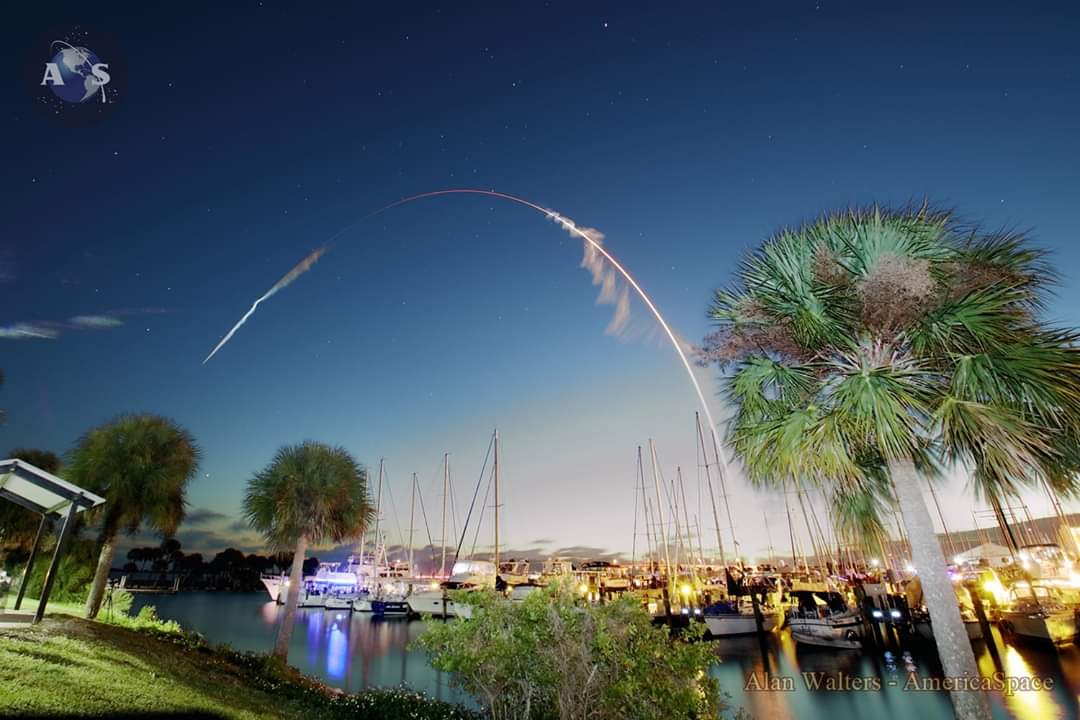
The 41.5-foot-long (12.6-meter) Dual-Engine Centaur (DEC) arrived at the Cape from ULA’s Decatur, Ala., facility in October 2018, followed by the Launch Vehicle Adapter (LVA) and aeroskirt a few weeks later. By mid-December 2018, the CCB had also arrived in Florida for processing, with an expectation that launch could occur as soon as April 2019. As circumstances transpired, this did not occur and launch was postponed until August, September, late October and eventually year’s end, partially to avoid unnecessary schedule pressure and circumvent the risk of interfering with other national security payloads on the ULA manifest.
On 4 November, the CCB was raised to the vertical inside the Vertical Integration Facility (VIF), achieving the so-called Launch Vehicle On-Stand (LVOS) milestone. Four days later, the Centaur, the LVA and the aeroskirt was mated to the top of the CCB, after which the vehicle underwent integrated testing, the installation of ordnance and the loading of Flight Termination System (FTS) codes. And on 14 November, the twin solid-fueled rocket boosters were mated to the stack. All that was needed was the arrival of the CST-100 Starliner itself.
In mid-October, the Starliner itself became complete when its pressurized crew module and unpressurized service module were mated together for integrated testing. Finally, on 21 November, the spacecraft was trundled from the Commercial Crew and Cargo Processing Facility (C3PF)—formerly Orbiter Processing Facility (OPF) Bay 3 from the shuttle era—near the Vehicle Assembly Building (VAB), out to SLC-41 and hoisted into position at the tip of the Atlas V. When fully assembled, the stack rose 172 feet (52 meters) from the SLC-41 surface. The stack underwent an electrical systems test and a wet countdown demonstration test, before the Flight Readiness Review (LRR) on 12 December officially scheduled the launch to occur on Friday, 20 December. Launch Readiness Review (LRR) operations were wrapped up on Tuesday, 17 December, producing a unanimous string of “Go” responses from Boeing, ULA, NASA and Air Force officials.
The Atlas V N22 was rolled the final distance from the VIF to the SLC-41 pad surface on Wednesday, 18 December, after which the CST-100 Starliner hatch was opened for access by the “Blue Team”: an eight-strong group involving five Boeing engineers and three ULA engineers.
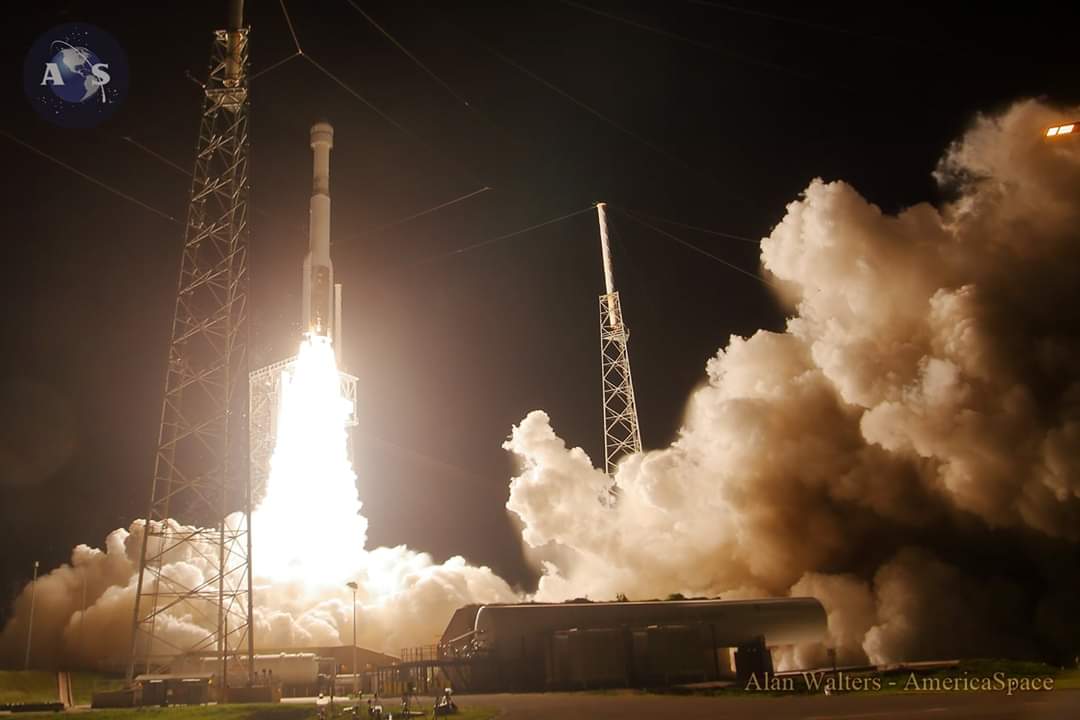
As dawn began to break over the marshy Florida landscape on Friday, final preparations were underway. At T-2.7 seconds, the single Russian-heritage RD-180 engine at the base of the CCB roared to life with a propulsive yield of 860,000 pounds (390,000 kg). Then, as the countdown clock touched zero at 6:36 a.m. EST, the staccato crackle of the twin solid-fueled boosters split the morning air with another 700,000 pounds (310,000 kg) of thrust and the first Atlas V N22 took flight. The vehicle commenced a fast climb away from SLC-41, passing the point of maximum aerodynamic pressure on its flight surfaces at 42 seconds into ascent and exceeding Mach 1 at just over a minute.
The twin boosters, exhausted of their solid fuel, were jettisoned as planned some 2.5 minutes into the mission, whilst the RD-180 continued to burn hot and hard until 4.5 minutes, when it shut down and the CCB was discarded. It was now the turn of the DEC, whose twin Aerojet Rocketdyne RL10A-4-2 engines ignited with a combined impulse of nearly 45,000 pounds (20,400 kg) in a single, continuous “burn” over slightly more than seven minutes. Unlike the single-engine Centaur used on previous Atlas V missions, the presence of the DEC was expected to “flatten” the CST-100 trajectory to afford a safer re-entry environment for future astronauts in the dire eventuality of a launch abort. During the course of the DEC’s long burn, the aeroskirt was jettisoned and the Starliner separated from the rocket at 14 minutes and 54 seconds into the flight.
At the moment of separation, the spacecraft occupied a suborbital slot with a perigee of 45 miles (72 km) and an apogee of 112 miles (181 km), inclined 51.6 degrees to the equator, when the automated timing issue occured.
With regards to the rocket and launch, mighty Atlas once again flew flawlessly according to ULA’s CEO Tory Bruno, even noting that they hit a bullseye at spacecraft separation.
Starliner however believed the elapsed timing was different than it really was, so it automatically tried to maintain precise control that it wouldnt normally do, using more fuel and leaving it without enough to reach the ISS. Mission controllers were on top of it, however the spacecraft was between TDRS satellites at the time, and so there was a delay in the spacecraft receiving the command from ground to overlook the automated timing error.
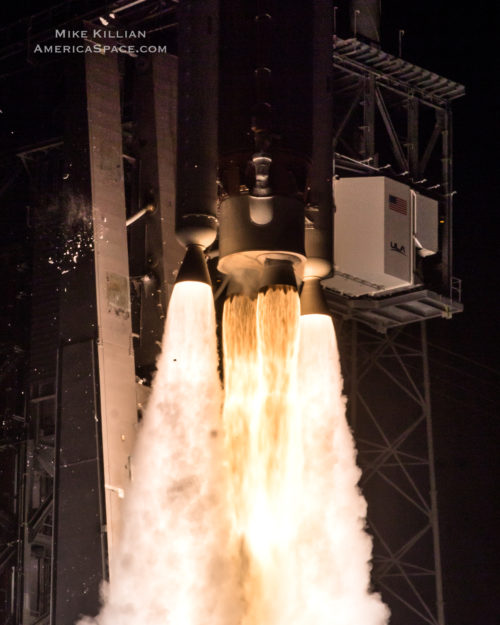
Had an actual crew been onboard they would have been totally fine, and can actually stop automation and take over the Starliner, and even manually control thruster / engine burns. That said, had this happened on a crewed flight it is more than likely they would have taken manual control and got back on course for the ISS.
All systems on the Starliner are in working order and the spacecraft is healthy, so Boeing and NASA will continue hitting a bunch of other orbital test objectives outside of actually docking to the ISS. Boeing opted to abort an ISS rendezvous because they believed Starliner had burned too much fuel, and instead wanted to protect White Sands so they can hit important reentry and landing test objectives.
.
.
FOLLOW AmericaSpace on Facebook and Twitter!
.
.




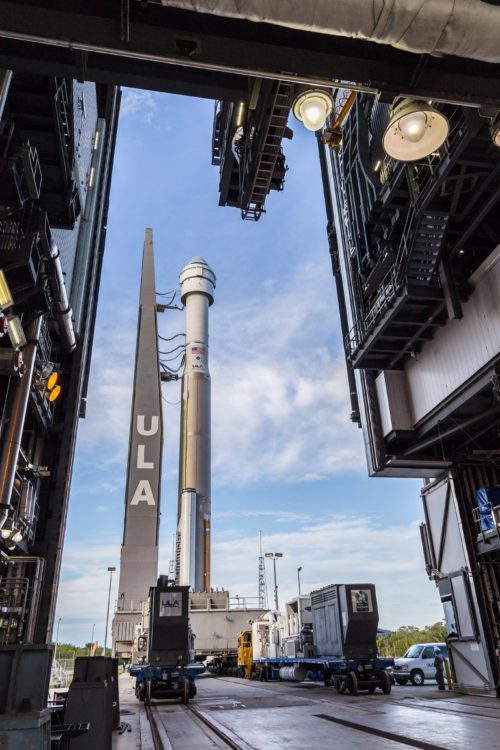
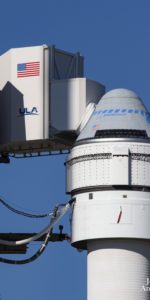
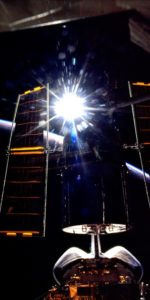
Listening to the NASA-Boeing press conference immediately after the mishap, you could be forgiven for thinking the mission had been a flawless success.
NASA boss Bridenstine was overly flattering of Starliner while the Commercial Crew Program manager even suggested an autonomous docking wasn’t essential. Man, you could have fooled me ever since 2016 with all that fancy CGI. May be SpaceX shouldn’t be too concerned about its In Flight Abort test. Huh?
As far as most Americans are concerned Boeing goes from one PR disaster to another and NASA obsequiously downplaying Starliner’s under performance is unworthy. A second Orbital Flight Test –with an actual docking with ISS — should be mandatory.
Since this is the second off nominal test (one parachute failure on abort test) in a row I would hope in private NASA is reading them the riot act.
Especially after the NASA IG outted NASA for giving Boeing an additional 1.6M
I understand the public statements.
This is a flight test and problems are found on tests. Boeing has several more milestones in this mission, let’s see how it goes. Do we need an autonomous rendezvous – to demonstrate one with a crew on board? No. Boeing could fly a crew to ISS (assuming the rest of the flight goes well) since they would do a careful rendezvous.